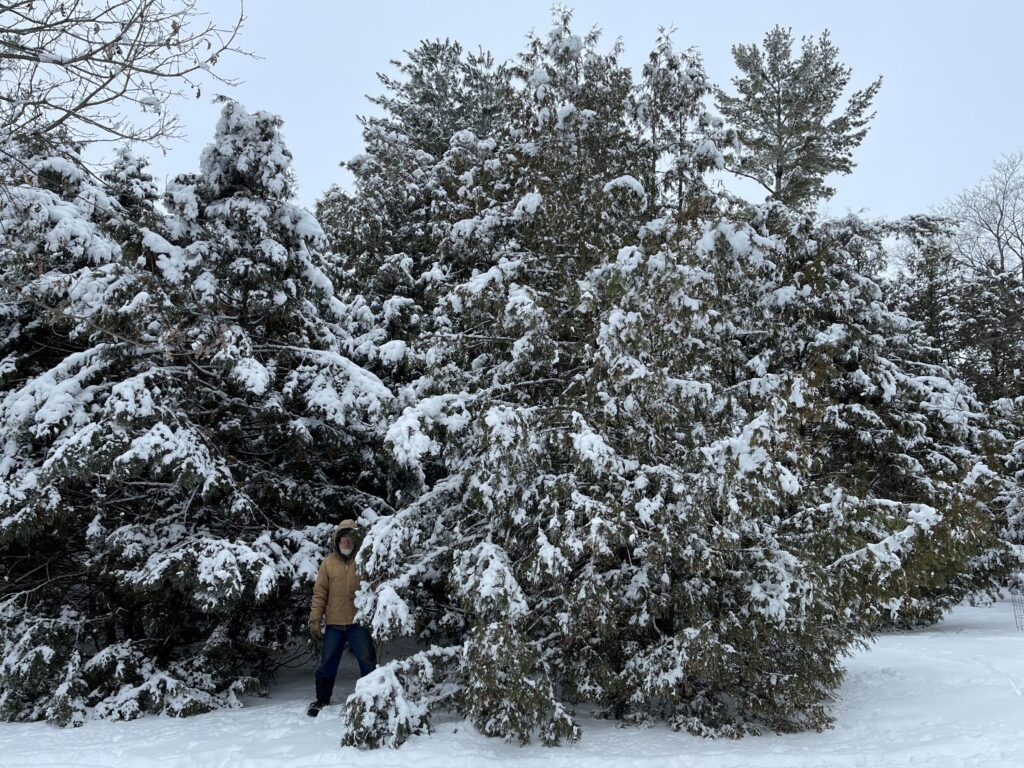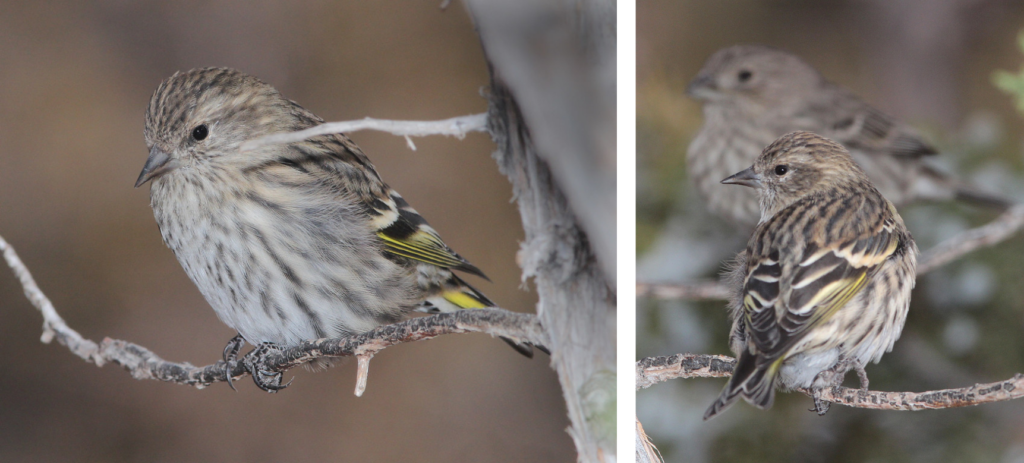Pine Siskins: Goldfinches in Disguise

In our arbor vitae thicket a few days after seeing several deer gathered there. Photo by Kate Sulentic.
Northern states tend to have most of their hunting seasons in autumn. One of the reasons is that winter mortality is greater than in other seasons, especially due to starvation and freezing. So some of the wildlife shot by hunters would have died anyway, and after the hunt, there is more food and habitat for those remaining. In tough winters locally, deer often favor my neighbors’ hillside, and last week a group of three were behaving as though they had found something there worth eating, more worthwhile than the white pine needles available nearby. I wanted to know whether I was reading them correctly and learn what they had found. So I followed a route where I could drift down closer to them unobserved and wound up in our arbor vitae thicket.
While scouting the deer, a small squadron of little birds flew towards me, using the graceful undulating flight pattern of goldfinches. But they weren’t goldfinches. Fortunately, they landed in the thicket near me and began working the branches for dormant bugs and seeds still in cones. They had a strong streaky brown and white pattern of color running from their neck down both their breast and their back. The topside of their wings had narrow yellow bands running along the bases of their primary flight feathers, and their beaks were more slender and pointy compared to the typical wider finch beaks, which seem to be designed more for probing than just breaking apart seeds. And these birds didn’t seem particularly concerned about me being there. This all described them as pine siskins.
Their features and flight reminded me of Kenn Kaufman’s comment in “Lives of North American Birds,” “although striped like a sparrow … this is really a goldfinch in disguise.” And they are close cousins to the American goldfinch. I hadn’t seen, or at least hadn’t noticed, pine siskins around our place for several years and had kinda forgotten about them, so it was good to meet them again.
In summer, pine siskins are mostly a bird of northern conifer forests and the Rocky Mountains where they nest, although a few may nest in Iowa each year in conifer plantations. In winter, they drift as flocks into the lower 48 states east of the Rocky Mountains, becoming more generalists, searching for weed seed wherever weeds grow and often mingling with goldfinches who are in their winter garb. In some winters in southeast Iowa, the birds are quite abundant and everyone has them at feeders and in bushes around their homes. Then a winter or two later, you might not be able to find anyone who has seen one. So far this winter, this is the only flock I’ve noticed.
And returning to the hungry deer. It transpires that a week or two before, they had grazed down a few staghorn sumac suckers to the then snowline. And on pine siskin day, they had returned to try to dig deeper for the stubs, which was difficult. I don’t know whether they had memorized the locations or could still smell them through 4-6 inches of new snow, but they were finding the stubs. For more about staghorn sumac as a wildlife food plant, see my note from June 14, 2018, “Survival Food for the Birds.”
Tags: conifer stand, disguise, goldfinch, iowa birds, iowa breeding bird atlas, Iowa winter, lives of north american birds, Lon Drake, pine siskin, spinus pinus, staghorn sumac


